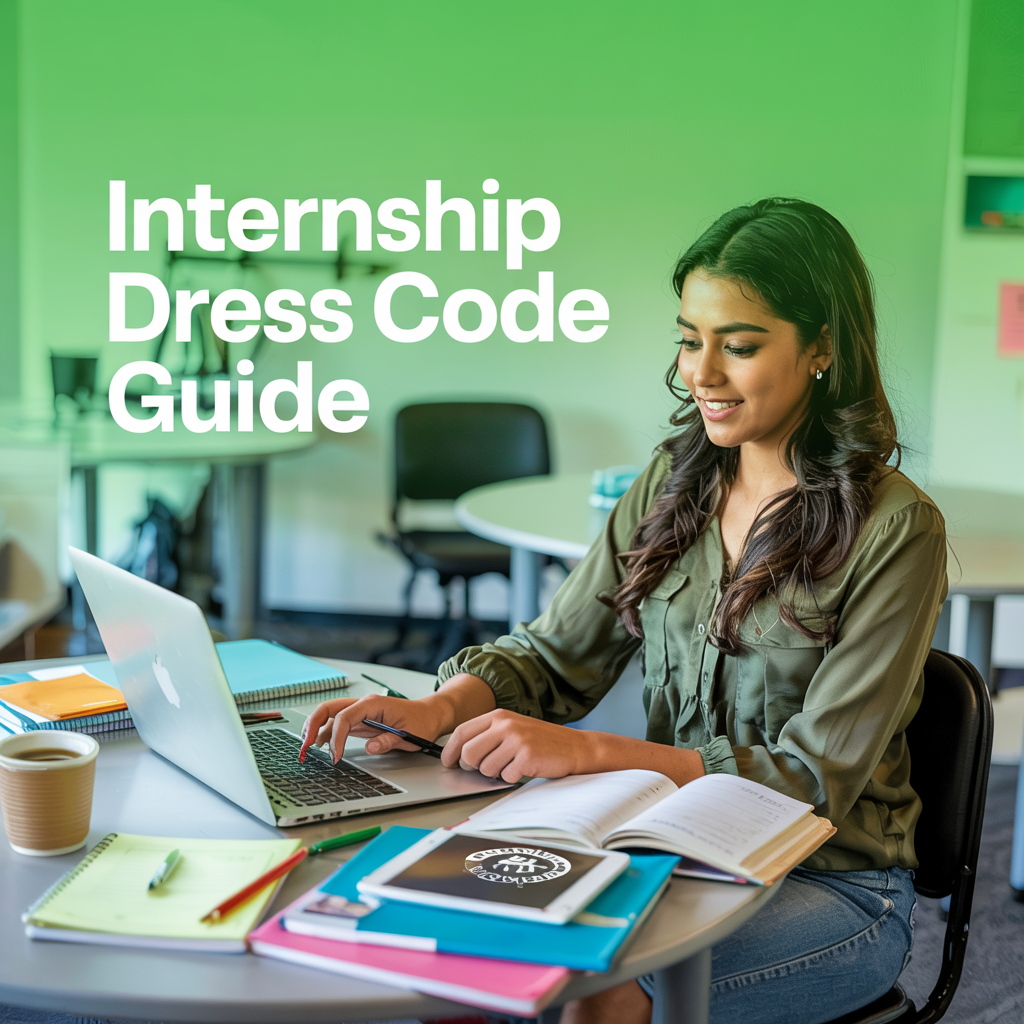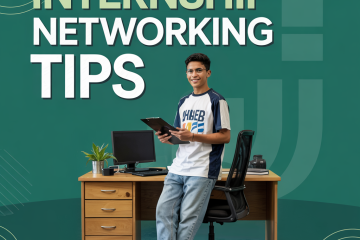What to Wear: Internship Dress Code Decode (Virtual & In-Person)

You landed an internship interview or the internship itself – great! Now comes a practical question: what do you wear? Navigating the internship dress code can feel tricky, especially with the rise of remote work. Understanding different levels of professional attire, from casual to formal, and knowing what to wear virtual interview settings require, helps you make a positive impression and feel confident. This internship attire guide breaks it down.
💡Pro Tip: Landed the interview but still building your resume or profile? Check out Cirkled In to showcase your skills and stand out.
First Impressions: Why Attire Matters (Even Virtually)
While skills and attitude are most important, how you dress signals professionalism, respect for the workplace culture, and attention to detail.
- In-Person: Your attire contributes to the overall impression you make when meeting colleagues and supervisors.
- Virtual: Even on video calls, dressing appropriately shows you’re taking the role seriously. What’s visible on camera matters.
Following the dress code shows you understand workplace norms.
Decoding Common Dress Code Terms
Workplace attire generally falls into categories:
- Business Formal: Most formal. Suits, ties (for men), blouses/shells with skirts/slacks or dresses (for women), dress shoes. Usually reserved for very traditional industries (law, finance) or specific events. Rare for most internships.
- Business Professional: A step down from formal. Still requires suits or coordinated separates like blazers, dress pants/skirts, button-down shirts or blouses, dress shoes. Common in many corporate environments.
- Business Casual: Most common in many offices today. Allows more flexibility. Think collared shirts (polo or button-down), sweaters, blouses, khakis, dress pants, skirts/dresses (knee-length or longer). Avoid jeans, sneakers, t-shirts generally. Business casual student attire is often the target.
- Smart Casual / Casual: Allows clean jeans (no rips), casual (but neat) tops, sweaters, sneakers or clean casual shoes. Still avoid overly revealing or sloppy clothing. Common in tech startups or creative fields.
These are general guidelines; specific workplaces vary.
General Rules: Err on the Side of Professional
- When in Doubt, Dress Up: It’s always better to be slightly overdressed than too casual, especially early on.
- Clean and Neat: Clothes should be clean, ironed, and in good condition (no rips, stains).
- Good Grooming: Pay attention to personal hygiene. Keep hair neat.
- Avoid Extremes: Steer clear of overly revealing clothing, strong fragrances, excessive jewelry, or very distracting patterns/logos (unless it’s company branding).
In-Person Internship Attire Guide
- First Day/Interview: Aim for business casual or business professional, depending on what you learned about the company culture. A safe bet is often dress pants/skirt, a button-down shirt or nice blouse, and closed-toe shoes. A blazer is a good addition if unsure.
- Observe: Pay attention to what your supervisor and colleagues wear during the first few days. Adjust your attire accordingly for the rest of the internship.
- Comfort Matters (Somewhat): Ensure your clothes fit well and you can move comfortably, but prioritize professionalism over pure comfort.
Virtual Internship & Interview Attire (What to Wear Virtual Interview)
Even if remote, dress professionally for video calls.
- Focus on the Top Half: What’s visible on camera matters most. Wear a professional top (collared shirt, blouse, nice sweater). Avoid busy patterns that can be distracting on screen. Solid colors often work well.
- Look Presentable: Ensure your hair is neat and your background is tidy and professional (or use a virtual background).
- Test Your Lighting: Make sure your face is well-lit.
- Consider Pants (Yes, Really!): While tempting to wear pajama bottoms, dressing fully can help you feel more professional and avoid accidental camera mishaps. Smart casual bottoms are usually fine for a remote internship outfit.
- For Interviews: Dress as you would for an in-person interview at that company (likely business casual or business professional on top).
How to Figure Out a Specific Workplace’s Dress Code
- Ask!: During the interview process or before your first day, it’s perfectly acceptable to ask HR or your supervisor, “What is the typical dress code for the office/interns?”
- Check Website/Social Media: Look at photos on the company’s website (“Team” page) or LinkedIn profiles of employees. What are people wearing in office pictures?
- Consider the Industry: Finance and law are typically more formal than tech startups or creative agencies.
- Observe During Interview: If you had an in-person interview, what were people wearing?
Bonus Resource: Want more than just fashion tips? Build your professional brand with Cirkled In – your all-in-one student portfolio.
Final Thought: Dress for Confidence and Respect
Choosing the right internship dress code shows respect for the workplace and helps you feel more confident. When deciding what to wear virtual interview or in-person settings require, err on the side of professional, observe the company culture, and don’t be afraid to ask. Presenting yourself appropriately is an easy way to make a positive first impression.
Need more tips on college applications, scholarships, or just how to survive this whole process? Cirkled In has your back—check out Cirkled In resources to help you through every step of your college journey!



12 Comments
Jeffrey Park Hurst · July 2, 2025 at 11:06 am
My family always say that I am wasting my time here at net, but I know I am getting know-how every day by reading thes good content.
Toney Kunkle · July 2, 2025 at 12:17 pm
whoah this blog is wonderful i love studying your articles.
Keep up the great work! You recognize, lots of individuals
are hunting round for this info, you can aid them greatly.
Danelle Bess · July 10, 2025 at 5:28 am
Good shout
Amy S · July 15, 2025 at 12:42 pm
Thanks, Danelle! Glad you found it helpful. Dressing right—whether virtual or in-person—can really boost confidence and make a great impression!
Amy S · July 17, 2025 at 1:04 am
Whoah—thank you, Toney! 😊 We’re so glad you’re enjoying the articles. Helping students feel confident (and well-dressed 👔✨) for their future is what we’re all about. Stick around—more tips and style smarts coming your way soon! 💼🧠
Amy S · July 17, 2025 at 1:06 am
Sounds like you’re proving them wrong, Jeffrey — one helpful article at a time! 😉💡 We’re so glad you’re finding value in the content. Keep soaking up that know-how—you’re investing in your future, not wasting time! 💼✨
Fred Wrenn · August 12, 2025 at 11:42 pm
Good day! This is my 1st comment here so I just wanted to give
a quick shout out and say I truly enjoy reading your posts.
Can you suggest any other blogs/websites/forums that deal with
the same topics? Many thanks!
Amy S · August 13, 2025 at 11:21 am
Good day to you, Fred! 👋😊 We’re so glad you enjoyed this post. Thanks for joining the conversation and for reading our posts. Here’s to many more helpful reads (and perfectly polished internship outfits)! 👔✨
oros · August 14, 2025 at 3:16 pm
enjoyed this
Amy S · August 15, 2025 at 10:09 am
Glad you enjoyed it, Iris! 😄✨ Now you’re all set to dress for success—whether it’s on-screen or in the office. 👔💼
Sarah Rose · September 21, 2025 at 8:44 am
liked it.
Amy S · September 24, 2025 at 10:33 am
Glad you liked it, Sarah! 🎉 Dressing the part (even on Zoom) can really boost confidence. Thanks for stopping by!